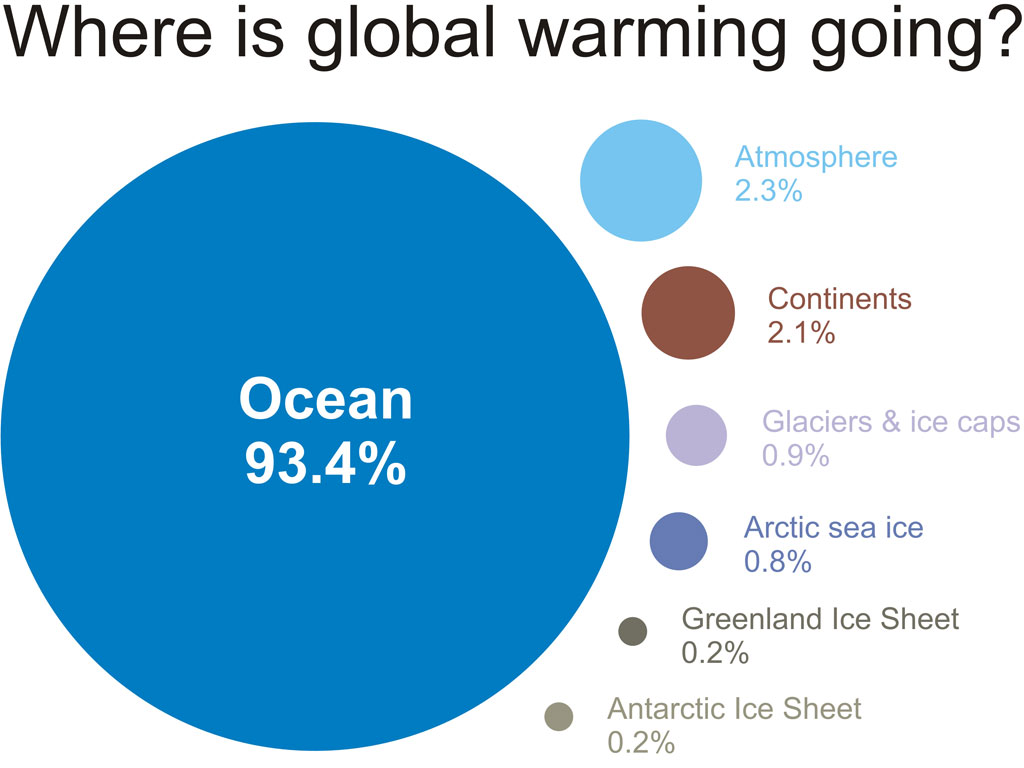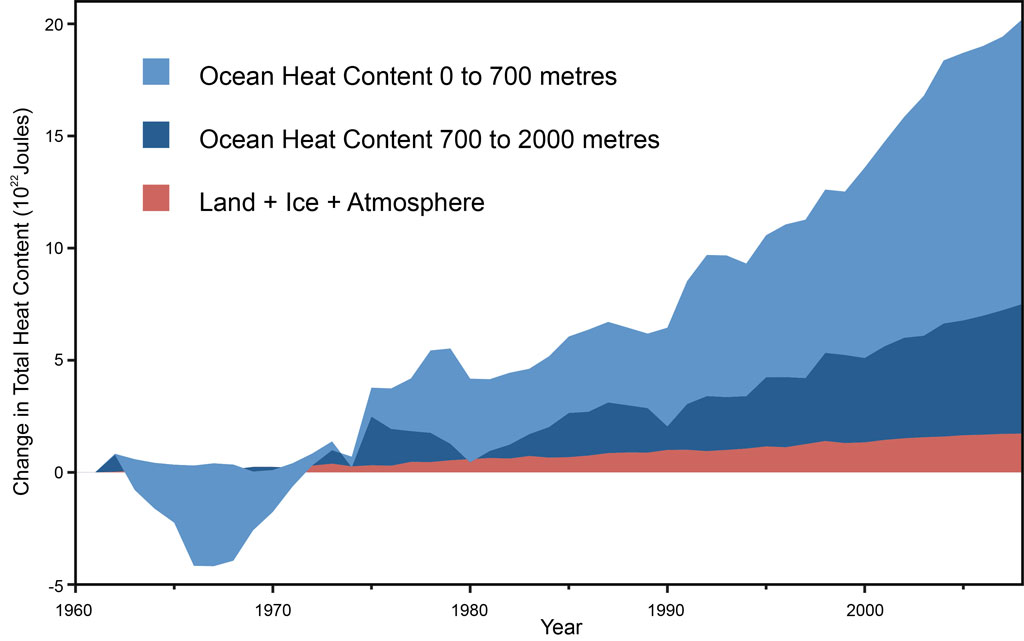 Arguments
Arguments
 Software
Software
 Resources
Comments
Resources
Comments
 The Consensus Project
The Consensus Project
 Translations
Translations
 About
Support
About
Support


Latest Posts
- Skeptical Science New Research for Week #49 2025
- Climate Adam & Dr Gilbz - Paris Climate Agreement At 10: Did It Do Anything?
- Fact brief - Does the recent slowdown in Arctic sea-ice extent loss disprove human-caused warming?
- Why the chemtrail conspiracy theory lingers and grows – and why Tucker Carlson is talking about it
- 2025 SkS Weekly Climate Change & Global Warming News Roundup #48
- Skeptical Science New Research for Week #48 2025
- Consensus machines
- Just have a Think - How an African energy revolution could save ALL of us.
- A girl’s grades drop every summer. There’s an alarming explanation.
- 2025 SkS Weekly Climate Change & Global Warming News Roundup #47
- Fact brief - Are changes in solar activity causing climate change?
- Skeptical Science New Research for Week #47 2025
- Exploring newly released estimates of current policy warming
- Climate Adam - Why the Climate Crisis is a Health Crisis
- Super pollutants are trendy, but we should be careful how we use them
- 2025 SkS Weekly Climate Change & Global Warming News Roundup #46
- Skeptical Science New Research for Week #46 2025
- On the Gates climate memo
- Climate Adam - Climate Scientist responds to Bill Gates
- Five ways Joe Rogan misleads listeners about climate change
- 2025 SkS Weekly Climate Change & Global Warming News Roundup #45
- Skeptical Science New Research for Week #45 2025
- Debunking Joe Rogan, Dick Lindzen, and Will Happer
- Fact brief - Does cold weather disprove human-caused climate change
- Climate change strengthened Hurricane Melissa, making the storm’s winds stronger and the damage worse.
- 2025 SkS Weekly Climate Change & Global Warming News Roundup #44
- Skeptical Science New Research for Week #43 2025
- Climate Adam - Can Solar Halt the Desert?
- Fact brief - Is there empirical evidence for human-caused global warming?
- A “controversial” methane metric?
Archived Rebuttal
This is the archived Intermediate rebuttal to the climate myth "Satellite record is more reliable than thermometers". Click here to view the latest rebuttal.
What the science says...
|
Satellites don't measure temperatures, and their uncertainty is five times as large as that in the global surface temperature record. |
Satellites don't measure temperature. When people refer to the satellite temperature record, they're referring to microwave sounding unit (MSU) instruments on satellites. As Andrew Dessler describes in the video below by Peter Sinclair, MSUs measure voltages on detectors, which themselves are detecting microwave signals emitted by oxygen molecules in the Earth's atmosphere. To translate these voltages and microwave detections into estimates of the temperature of various layers of the Earth's atmosphere requires a model.
Satellite Temperature Record Challenges
Converting those MSU microwave detections into a reliable long-term atmospheric temperature record is a challenging proposition, made all the more difficult by a number of confounding factors. For example, the satellites have a limited life span. The overall satellite MSU record is comprised of numerous satellites, and each has a different calibration, orbit, etc. that must be accounted for. During that life span, the satellites also experience friction, which causes their orbits to drift. If not correctly taken into account, these factors can create a bias in the estimated temperature record.
Another issue is that the MSU detections can be influenced by factors besides just temperature-influenced oxygen microwave signals, for example, cloud liquid water. Weng et al. (2014) found that the MSU channel (Channel 3) that focuses on the lowest level of the atmosphere (the lower troposphere) is most influenced by the presence of cloud liquid water. Weng et al. suggest,
the global mean temperature in the low and middle troposphere has a larger warming rate (about 20–30% higher) when the cloud-affected radiances are removed from AMSU-A data.
Roy Spencer who, with John Christy, runs the University of Alabama at Huntsville (UAH) satellite temperature dataset disagrees, believing that the cloud-caused bias is insignificant. The magnitude of this bias in the satellite data remains an unresolved question.
Another issue related to changes in the satellites' orbits is called 'diurnal drift'. The satellites are in 'Sun Synchronous orbits' and are meant to stay aligned with the Sun so that they always cross the equator at the same time. If they don’t, then the normal daily temperature cycles below will start to add a false bias to the data. The UAH team tries to get around this bias by attempting to use these satellites during periods when the diurnal drift is small, while other groups (RSS and NOAA) apply a correction based on the diurnal drift in a global climate model. Po-Chedley et al. (2015) argue that the UAH method creates a cool bias in their dataset.
There are still further challenges, for example the fact that the increased greenhouse effect cools the stratosphere, which is the layer of the atmosphere above the troposphere. If microwave measurements from the stratosphere bleed into estimates of tropospheric temperatures, that can also cause a cool bias in the trend. The UAH dataset has required a number of significant adjustments since its inception to correct for these sorts of factors.

The figure below shows all the processing required to get from voltage measurements on an MSU sensor for the Remote Sensing Systems (RSS) group to an estimate of the temperature in the atmosphere.
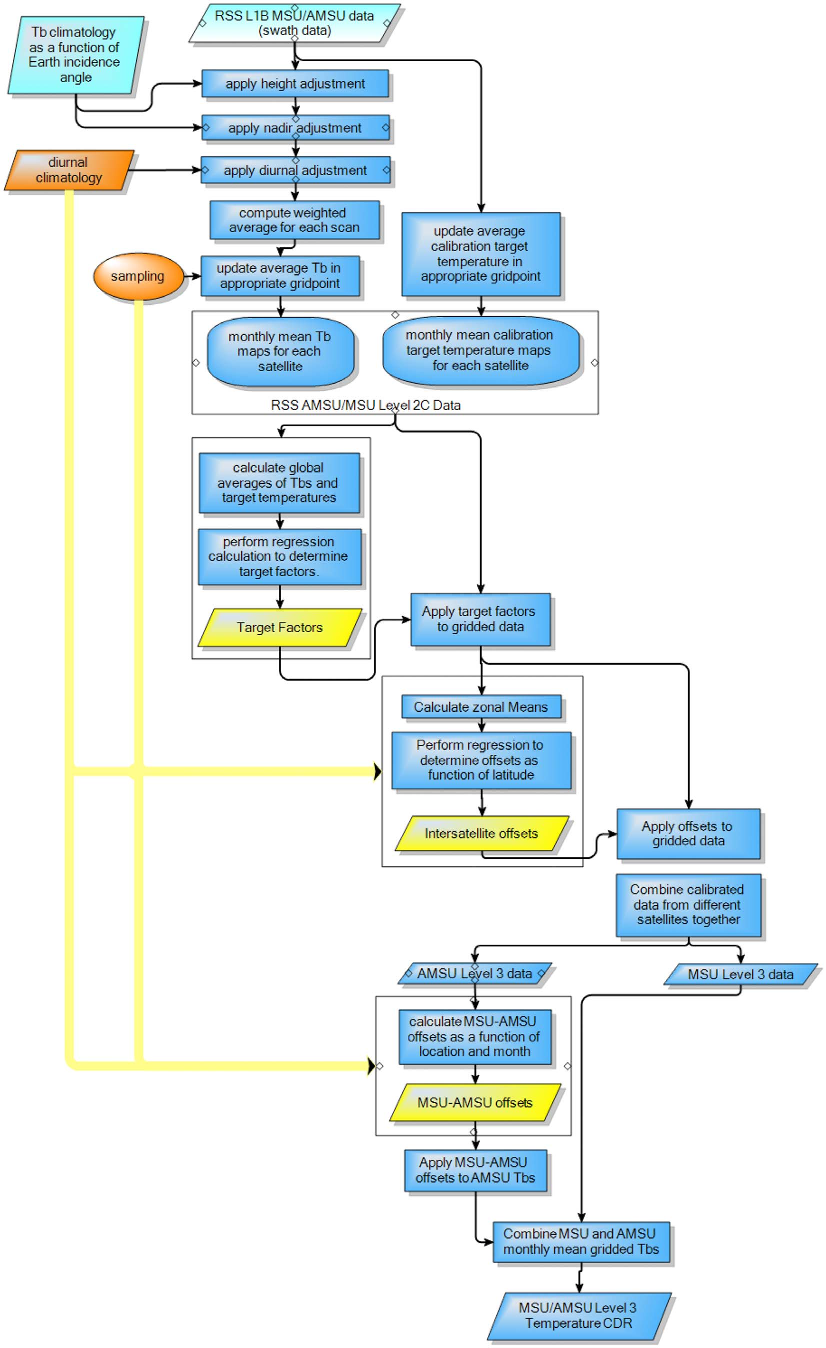
Flowchart of the processing algorithm for the RSS satellite data, from Mears et al. (2011)
As a result, the uncertainty in the satellite data is five times larger than that in the surface temperature record, which is based on direct measurements by thermometers.
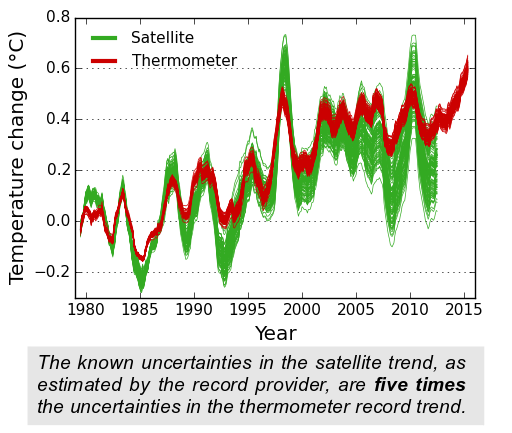
Spread in the satellite and surface temperature ensembles over time. Each line shows one possible temperature reconstruction from the ensemble (12 month moving average). All of the series have been aligned to a zero baseline for the 10 year period 1979-1988, so that the increasing spread after that period gives an indication of the variability in the trend. Created by Kevin Cowtan.
on the basis of the best understanding of the record providers themselves, the surface temperature record appears to be the better source of trend information. The satellite record is valuable for its uniform geographical coverage and ability to measure different levels in the atmosphere, but it is not our best source of data concerning temperature change at the surface.
Tropospheric temperature trend disagreements
The UAH and RSS groups aren't the only ones trying to estimate the temperature of the atmosphere. We also have direct measurements made by temperature sensors on weather balloons, for example. These are generally in good agreement with the MSU lower atmosphere temperature estimates, until recent years. Since the turn of the century, the UAH and RSS datasets show little warming of lower tropospheric temperatures, while weather balloons show continued warming. For example, Sherwood et al. (2015) concluded that the weather balloon data "contradicts suggestions that atmospheric warming has slowed in recent decades or that it has not kept up with that at the surface."
Similarly, another weather balloon dataset from NOAA called RATPAC shows a growing divergence from the satellite lower troposphere temperature estimates over the past several years.
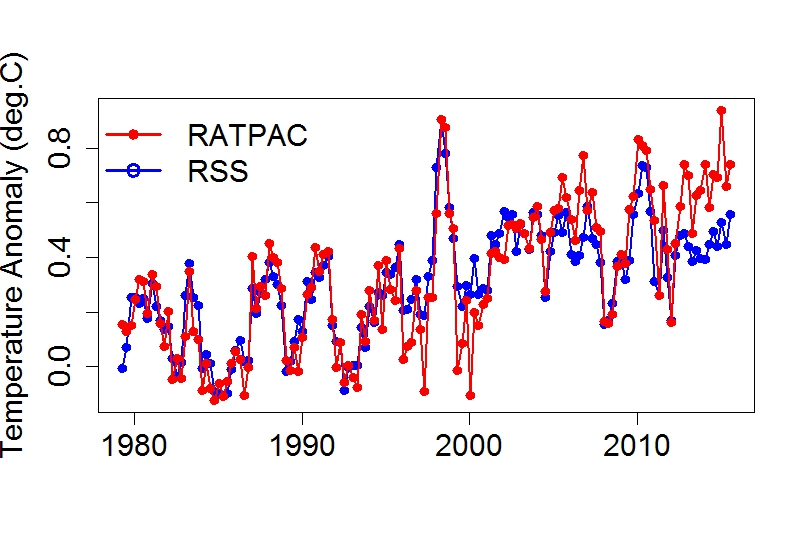
RATPAC vs. RSS lower troposphere temperature estimates. Graphic by Tamino.
There are also other groups besides UAH and RSS that have used the MSU data to create their own lower and mid-troposphere temperature estimates, and these different estimates show quite a lot of variation.
What makes "the best" the best?
This particular myth deals with the claim that the satellite data are "the best data we have" for measuring global warming. What's "best" is a subjective judgment call, but if the goal is to have greater certainty about the data and trends, the surface temperature record is "better" than the satellite data.
Additionally, only about 2% of the global energy imbalance goes into warming the atmosphere. Over 90% goes into warming the oceans, so if the goal is to best measure the overall warming of the Earth, ocean heat content data would be "the best" single source.
A visual depiction of how much global warming heat is going into the various components of the climate system for the period 1993 to 2003, calculated from IPCC AR4 5.2.2.3.
Another consideration is that humans live on the surface, not kilometers up in the atmosphere. The surface temperature record measures temperature changes where we live, which is arguably the most relevant in terms of effects on human society. By that standard, the surface temperature record would be "the best."
What we should really do, rather than trying to decide which piece of data is "best," is to consider all the data. That includes the temperature of the atmosphere, surface, and oceans, melting ice, rising oceans, shifting ecosystems, and so on. These paint a clear picture of what's happening with the Earth's climate – it's warming and changing fast.
Global heat content data, from Nuccitelli et al. (2012).
d
Updated on 2016-01-14 by dana1981.
THE ESCALATOR

(free to republish)



















































